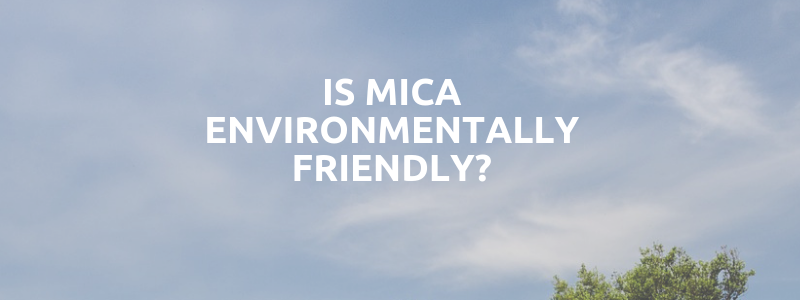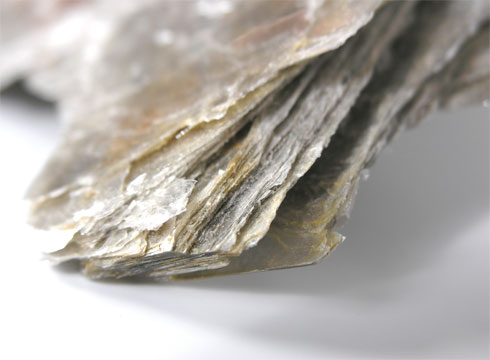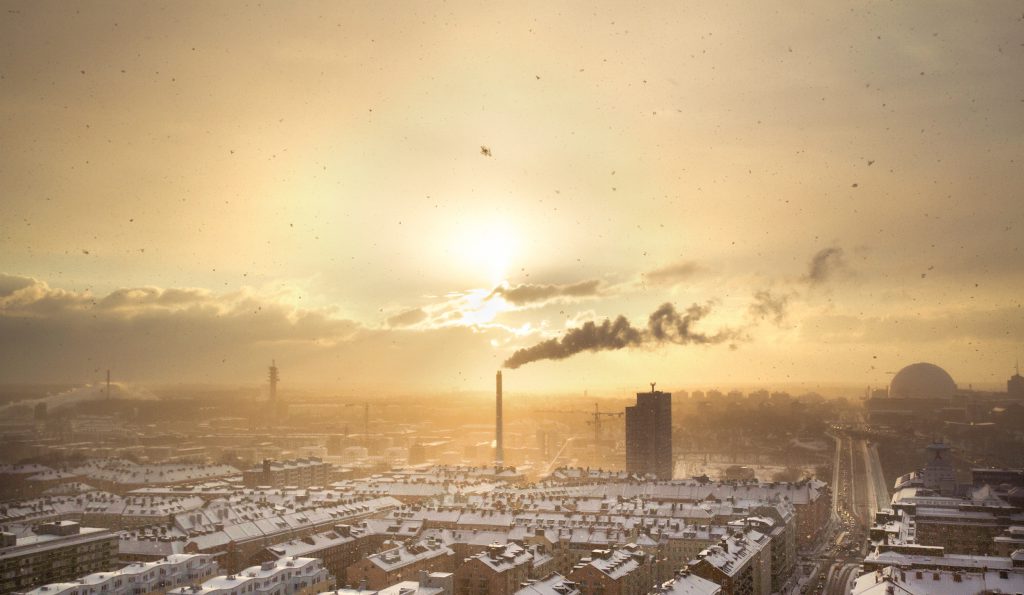
While mica brings key environmental benefits to a wide number of industries, is mica environmentally friendly when it comes to its mining, processing and disposal?
Mica is a naturally occurring mineral and its two main forms used in various industrial and commercial applications are phlogopite or green mica, and muscovite or white mica.
As this blog post on mica in its natural form explores, extracting mica requires mining it. As with all forms of mining, there are risks and environmental issues that come with these processes.
Mining for Mica

Much of mica is sourced from coarse grained igneous rocks called pegmatites. Mining mica crystals is a concentrated, demanding task because of the risk of damage to the material in its natural state.
There are two main kinds of mica mining: for sheet mica and for scrap or flake mica.
Mining for sheet mica involves either deep shaft or open pit surface mining methods. Once a mica seem is discovered, extracting it involves a careful process. This is because the aim is to maintain the thin, natural sheets of the crystals for later processing.
Consequently, while there may be some use of explosives, the miners must avoid penetrating the actual pocket of mica being mined. Therefore, there is an environmental concern that is integral to the mining process.
This sheet form of mica is less abundant than flake mica, and labour-intensive in its extraction.
Mining for scrap or flake mica is less economically or environmentally risky, while being essentially a by-product of the sheet mica mining industry.
This form of mica has the qualities essential for manufacturing paper, and is also used in the beauty industry.
Generally, mica flakes are recovered in open pit mining conditions, from the extraction of quartz, kaolin and feldspar. The mica is extracted at the processing stage, once the rocks have been blasted, extracted and loaded onto transport.
Hazards of Mica Mining
Mica mining is, by its very nature, labour-intensive. It is also mostly carried out by more vulnerable people in poorer countries. India is a major exporter of muscovite mica. A large part of mica mining is done by hand, and it involves travelling far down narrow mining shafts.
Unfortunately, many sheet mica workers are poorly paid, unprotected and therefore exploited. They may well live and work in remote areas where there is little available to them by way of education or healthcare. There are also concerns that non-western countries with extensive mica mining are high risk for negative impact on children’s rights.
In some countries, there is illegal mica mining, posing further risks to those involved and, because it is unregulated, also risks to the surrounding environment.
Mica mining should also take into consideration mineral conservation. This should mean more emphasis on efficiency in extraction and processing; and avoiding over-exploitation of mineral resources.

Making Mica Mining Environmentally Friendly
The Indian Government has pledged to legalise the mica mines in North East India. Most of the mining in this region is illegal and involves around 20,000 children working in it.
In January 2017, on the back of the Delhi Mica Mining Summit, an international group of brands and companies launched the Responsible Mica Initiative.
This is a collaboration between public, private and non-profit sectors, with the objective of implementing fair and sustainable mica collection in India.
The process of the Indian Government legalising and regulating mica mining will first focus on selling of scrap mica dumps, and auctioning off old mica mines and reserves.
On the back of this should come improved working practices and proper control systems, such as ensuring fair wages and safe and healthy working conditions.
Other concerns include improving local education resources to help children into school and away from illegal working.
Responsible Supply Chains for Mica
As a manufacturer and processor using mica as a raw material, we want to ensure our supply chains are fully compliant. This means understanding what the sources of the mica we use are, and that they are legal.
We maintain close relationships with all our suppliers, ensuring clear visibility when it comes to how they mine, process and ship mica to us.
These close relationships are based on direct, regular contact with primary suppliers, and close contact with procurement teams on the ground, to help ensure our suppliers meet our stringent social and environmental standards.

Mica, Elmelin and the Environment
While we endeavour to make sure the raw mica we process meets the right standards in how it is mined and supplied, closer to home we have invested in specialist equipment to lessen our own environmental impact.
This helps us purify our emissions, conforming to current European emissions standards. Also, in terms of environmental impact, we are aware of our location and work in ways to keep our residential neighbours free from disturbance.
Mica is a hugely versatile and valuable natural resource. It contributes significantly to the efficiency and safety of various key industries. It is only right that we help ensure that our own contribution, and that of our suppliers, is as environmentally-friendly as possible.
Mica and Your Industry
Talk to us about your industry’s needs and we’ll help you find the right mica-based solution. Please call us on +44 20 8520 2248, or email sales@elmelin.com. You can also complete our enquiry form and we’ll respond as soon as possible.
